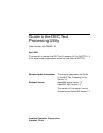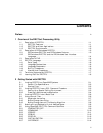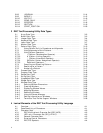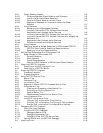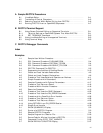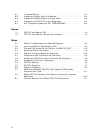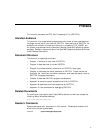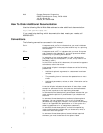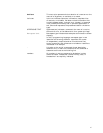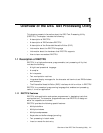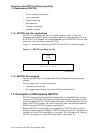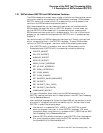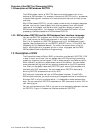5.2.3 Global Selection Support ................................... 5–6
5.2.3.1 Difference Between Global Selection and Clipboard . ........... 5–6
5.2.3.2 Handling of Multiple Global Selections . . ................... 5–6
5.2.3.3 Relation of Global Selection to Input Focus .................. 5–6
5.2.3.4 Response to Requests for Information About the Global
Selection ............................................ 5–7
5.2.4 Using Callbacks .......................................... 5–7
5.2.4.1 Background on DECwindows Callbacks . . ................... 5–8
5.2.4.2 Internally Defined DECTPU Callback Routines and
Application-Level Callback Action Routines .................. 5–8
5.2.4.3 Internally Defined DECTPU Callback Routines with UIL ....... 5–8
5.2.4.4 Internally Defined DECTPU Callback Routines with Widgets Not
Defined by UIL . . . .................................... 5–9
5.2.4.5 Application-Level Callback Action Routines .................. 5–9
5.2.4.6 Callable Interface-Level Callback Routines .................. 5–9
5.2.5 Using Closures ........................................... 5–10
5.2.6 Specifying Values for Widget Resources in DECwindows DECTPU . . . 5–10
5.2.6.1 DECTPU Data Types for Specifying Resource Values .......... 5–10
5.2.6.2 Specifying a List as a Resource Value . . . ................... 5–11
5.3 Writing Code Compatible with DECwindows EVE ................... 5–13
5.3.1 Select Ranges in DECwindows EVE .......................... 5–13
5.3.1.1 Dynamic Selection . .................................... 5–13
5.3.1.2 Static Selection . . . .................................... 5–13
5.3.1.3 Found Range Selection .................................. 5–14
5.3.1.4 Relation of EVE Selection to DECwindows Global Selection . . . . . 5–14
5.4 Compiling DECTPU Programs .................................. 5–14
5.4.1 Compiling on the EVE Command Line ........................ 5–15
5.4.2 Compiling in a DECTPU Buffer . . ............................ 5–15
5.5 Executing DECTPU Programs .................................. 5–15
5.5.1 Procedure Execution . . .................................... 5–16
5.5.2 Process Suspension . . . .................................... 5–16
5.6 Using DECTPU Startup Files .................................. 5–17
5.6.1 Section Files . ............................................ 5–17
5.6.2 Command Files .......................................... 5–17
5.6.3 Initialization Files ........................................ 5–18
5.6.4 Sequence in Which DECTPU Processes Startup Files . . ........... 5–18
5.6.5 Using Section Files . . . .................................... 5–19
5.6.5.1 Creating and Processing a New Section File ................. 5–19
5.6.5.2 Extending an Existing Section File ........................ 5–20
5.6.5.3 Sample Section File .................................... 5–21
5.6.5.4 Recommended Conventions for Section Files ................. 5–23
5.6.6 Using Command Files . .................................... 5–24
5.6.7 Using EVE Initialization Files . . . ............................ 5–25
5.6.7.1 Using an EVE Initialization File at Startup ................. 5–26
5.6.7.2 Using an EVE Initialization File During an Editing Session . . . . . 5–27
5.6.7.3 How an EVE Initialization File Affects Buffer Settings ......... 5–27
5.7 Debugging DECTPU Programs ................................. 5–28
5.7.1 Using Your Own Debugger .................................. 5–28
5.7.2 Using the DECTPU Debugger . . . ............................ 5–28
5.7.2.1 Debugging Section Files ................................. 5–28
5.7.2.2 Debugging Command Files . . ............................ 5–29
5.7.2.3 Debugging Other DECTPU Source Code . ................... 5–29
5.7.3 Getting Started with the DECTPU Debugger ................... 5–29
5.8 Handling Errors . ............................................ 5–30
vi



